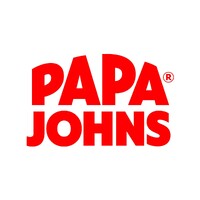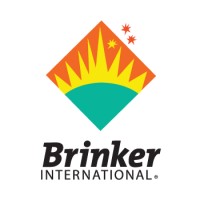
Yum! Brands Company Cyber Security Posture
yum.comYum! Brands, Inc., based in Louisville, Kentucky, and its subsidiaries franchise or operate a system of over 60,000 restaurants in more than 155 countries and territories under the Company’s concepts – KFC, Taco Bell, Pizza Hut and the Habit Burger Grill. The Company's KFC, Taco Bell and Pizza Hut brands are global leaders of the chicken, Mexican-style food, and pizza categories, respectively. The Habit Burger Grill is a fast casual restaurant concept specializing in made-to-order chargrilled burgers, sandwiches and more. What makes Yum! a great place to work? It's our people. As the world's largest restaurant company, we invest in people capability so that our global workforce can make the most of their careers. With ongoing opportunities for personal and professional success, we've built a culture that rewards and recognizes great effort while providing the flexibility that is so important to all of us.
Yum! Brands Company Details
yum-brands
7014 employees
275881.0
722
Restaurants
yum.com
723
YUM_1631490
In-progress
Between 900 and 1000
This score is AI-generated and less favored by cyber insurers, who prefer the TPRM score.
 Yum! Brands Global Score
Yum! Brands Global Score.png)

Yum! Brands Company Scoring based on AI Models
| Model Name | Date | Description | Current Score Difference | Score |
|---|---|---|---|---|
| AVERAGE-Industry | 03-12-2025 | This score represents the average cybersecurity rating of companies already scanned within the same industry. It provides a benchmark to compare an individual company's security posture against its industry peers. | N/A | Between 900 and 1000 |
Yum! Brands Company Cyber Security News & History
| Entity | Type | Severity | Impact | Seen | Url ID | Details | View |
|---|---|---|---|---|---|---|---|
| Yum! Brands | Breach | 60 | 3 | 04/2023 | YUM33429523 | Link | |
Rankiteo Explanation : Attack with significant impact with internal employee data leaksDescription: Yum! Approximately 300 restaurants in the UK were closed for one day as a result of a cyberattack that Brands had to endure that required the company to shut down its systems. The exposed information includes names, driver’s license numbers, non-driver Identification Card Number, and other types of personal identifiers. The company investigated the security breach with the help of third-party cybersecurity experts, to identify the scope of the incident. They investigated the incident and also provided complimentary credit monitoring and identity protection services for two years via IDX. | |||||||
Yum! Brands Company Subsidiaries

Yum! Brands, Inc., based in Louisville, Kentucky, and its subsidiaries franchise or operate a system of over 60,000 restaurants in more than 155 countries and territories under the Company’s concepts – KFC, Taco Bell, Pizza Hut and the Habit Burger Grill. The Company's KFC, Taco Bell and Pizza Hut brands are global leaders of the chicken, Mexican-style food, and pizza categories, respectively. The Habit Burger Grill is a fast casual restaurant concept specializing in made-to-order chargrilled burgers, sandwiches and more. What makes Yum! a great place to work? It's our people. As the world's largest restaurant company, we invest in people capability so that our global workforce can make the most of their careers. With ongoing opportunities for personal and professional success, we've built a culture that rewards and recognizes great effort while providing the flexibility that is so important to all of us.
Access Data Using Our API

Get company history
.png)
Yum! Brands Cyber Security News
Yum Brands confirms ransomware attack impacted some U.S. employees
Yum Brands confirmed this week that its ransomware attack that primarily impacted the UK market in January also impacted some US employees.
Personal data of fast food workers stolen in Yum! Brands ransomware attack
The personal information of individuals was stolen during the mid-January ransomware attack that forced nearly 300 restaurants to close down.
Bridging the Gap: Integrating Legal and Insurance Considerations into Restaurant Cybersecurity Response
This article explores how restaurants can better prepare for cyber incidents, understand third-party vendor risks, respond effectively when breaches occur.
Ransomware attack against Yum! Brands follows several incidents targeting restaurant industry
Fast food provider Yum! Brands disclosed a ransomware attack forced the company to shut down almost 300 restaurants in the U.K., the company ...
KFC owner suffers data breach following ransomware attack | Cyber Security Hub
US fast-food corporation Yum! Brands, which owns franchises including KFC, Pizza Hut and Taco Bell, has suffered a data breach following a ransomware attack.
Yum Brands says nearly 300 restaurants in UK impacted due to cyber attack
Yum Brands Inc said late on Wednesday a ransomware attack impacted certain information technology systems of the company which led to the ...
SC Award Winners 2025 ISACA – Best Professional Certification Program
The program is designed for professionals aiming to bridge the gap between cybersecurity operations and broader business objectives. It is ...
Top 10 Tech Internships Offered in Louisville
Louisville offers top tech internships, making it a key city for aspiring tech professionals to gain valuable experience.
Yum Brands faces class action suits from employees after ransomware attack
The Taco Bell and KFC operator is facing litigation after some personal data of company employees was stolen in the attack.

Yum! Brands Similar Companies

Covelli Enterprises
Covelli Enterprises operates nearly 300 Panera Bread bakery-cafes spanning eight states. Headquartered in Warren, Ohio, Covelli Enterprises is the single largest franchisee of Panera Bread, LLC and one of the largest restaurant franchisees in the country. As a leader in the fast casual segment, Cove

Olive Garden
Founded in 1982, Olive Garden is owned by Darden Restaurants, Inc. (NYSE:DRI), the world's largest company-owned and operated full-service restaurant company. With more than 800 restaurants, more than 92,000 employees and more than $3.5 billion in annual sales, Olive Garden is the leading restaurant

Papa Johns
Papa Johns seeks people who have an entrepreneurial spirit and share our philosophy for success. Hands-on training, a clean and safe work environment, quality business practices, advancement opportunities and meaningful work combine to produce not only the best pizza, but also the best team members!

Olive Garden
Founded in 1982, Olive Garden is owned by Darden Restaurants, Inc. (NYSE:DRI), the world's largest company-owned and operated full-service restaurant company. With more than 800 restaurants, more than 92,000 employees and more than $3.5 billion in annual sales, Olive Garden is the leading restaurant

P.F. Chang's
P.F. Chang’s is a restaurant concept that honors the 2,000-year-old Asian tradition of wok cooking and believes in making food from scratch every day in every restaurant. Since inception, P.F. Chang’s chefs hand-roll dim sum, hand chop and slice all vegetables and meats, handcraft every sauce and w

Brinker International
Dallas-based Brinker International, Inc. is one of the world’s leading casual dining restaurant companies. Founded in 1975, Brinker owns, operates or franchises more than 1,600 restaurants across 31 countries and two territories under the names Chili’s® Grill & Bar and Maggiano’s Little Italy®. O

Frequently Asked Questions
Explore insights on cybersecurity incidents, risk posture, and Rankiteo's assessments.
Yum! Brands CyberSecurity History Information
How many cyber incidents has Yum! Brands faced?
Total Incidents: According to Rankiteo, Yum! Brands has faced 1 incident in the past.
What types of cybersecurity incidents have occurred at Yum! Brands?
Incident Types: The types of cybersecurity incidents that have occurred incident Breach.
How does Yum! Brands detect and respond to cybersecurity incidents?
Detection and Response: The company detects and responds to cybersecurity incidents through third party assistance with Third-party cybersecurity experts and remediation measures with Complimentary credit monitoring and identity protection services for two years via IDX.
Incident Details
Can you provide details on each incident?

Incident : Cyberattack
Title: Cyberattack on Yum! Brands
Description: Approximately 300 restaurants in the UK were closed for one day as a result of a cyberattack that Yum! Brands had to endure, requiring the company to shut down its systems.
Type: Cyberattack
What are the most common types of attacks the company has faced?
Common Attack Types: The most common types of attacks the company has faced is Breach.
Impact of the Incidents
What was the impact of each incident?

Incident : Cyberattack YUM33429523
Data Compromised: names, driver’s license numbers, non-driver Identification Card Number, other types of personal identifiers
Downtime: One day
Operational Impact: 300 restaurants closed
Identity Theft Risk: High
What types of data are most commonly compromised in incidents?
Commonly Compromised Data Types: The types of data most commonly compromised in incidents are names, driver’s license numbers, non-driver Identification Card Number and other types of personal identifiers.
Which entities were affected by each incident?
Response to the Incidents
What measures were taken in response to each incident?

Incident : Cyberattack YUM33429523
Third Party Assistance: Third-party cybersecurity experts
Remediation Measures: Complimentary credit monitoring and identity protection services for two years via IDX
How does the company involve third-party assistance in incident response?
Third-Party Assistance: The company involves third-party assistance in incident response through Third-party cybersecurity experts.
Data Breach Information
What type of data was compromised in each breach?

Incident : Cyberattack YUM33429523
Type of Data Compromised: names, driver’s license numbers, non-driver Identification Card Number, other types of personal identifiers
Sensitivity of Data: High
Personally Identifiable Information: True
What measures does the company take to prevent data exfiltration?
Prevention of Data Exfiltration: The company takes the following measures to prevent data exfiltration: Complimentary credit monitoring and identity protection services for two years via IDX.
Investigation Status
What is the current status of the investigation for each incident?

Incident : Cyberattack YUM33429523
Investigation Status: Investigation completed
Post-Incident Analysis
What is the company's process for conducting post-incident analysis?
Post-Incident Analysis Process: The company's process for conducting post-incident analysis is described as Third-party cybersecurity experts.
Additional Questions
Impact of the Incidents
What was the most significant data compromised in an incident?
Most Significant Data Compromised: The most significant data compromised in an incident were names, driver’s license numbers, non-driver Identification Card Number and other types of personal identifiers.
Response to the Incidents
What third-party assistance was involved in the most recent incident?
Third-Party Assistance in Most Recent Incident: The third-party assistance involved in the most recent incident was Third-party cybersecurity experts.
Data Breach Information
What was the most sensitive data compromised in a breach?
Most Sensitive Data Compromised: The most sensitive data compromised in a breach were names, driver’s license numbers, non-driver Identification Card Number and other types of personal identifiers.
Investigation Status
What is the current status of the most recent investigation?
Current Status of Most Recent Investigation: The current status of the most recent investigation is Investigation completed.
What Do We Measure?
















Every week, Rankiteo analyzes billions of signals to give organizations a sharper, faster view of emerging risks. With deeper, more actionable intelligence at their fingertips, security teams can outpace threat actors, respond instantly to Zero-Day attacks, and dramatically shrink their risk exposure window.
These are some of the factors we use to calculate the overall score:
Identify exposed access points, detect misconfigured SSL certificates, and uncover vulnerabilities across the network infrastructure.
Gain visibility into the software components used within an organization to detect vulnerabilities, manage risk, and ensure supply chain security.
Monitor and manage all IT assets and their configurations to ensure accurate, real-time visibility across the company's technology environment.
Leverage real-time insights on active threats, malware campaigns, and emerging vulnerabilities to proactively defend against evolving cyberattacks.




